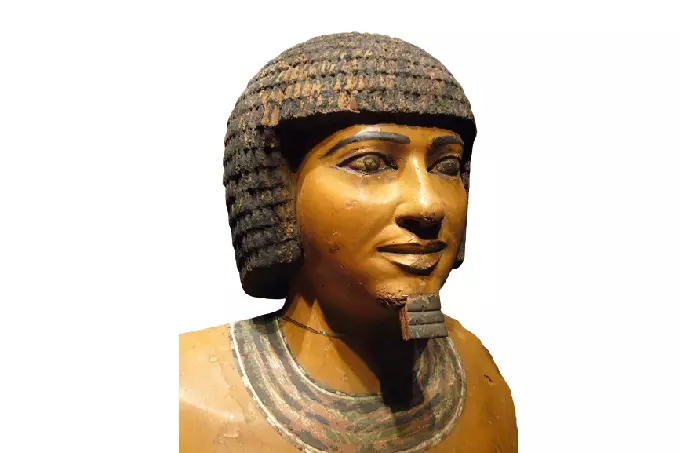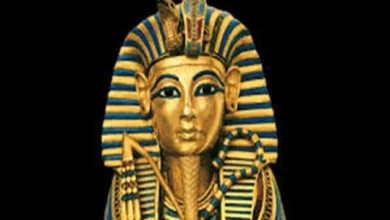Imhotep – the first genius of mankind

In the annals of Egyptian history, Imhotep held such a high position of authority that he was hailed as the wisest person who ever lived, complete with the capacity to do magical feats. Already a century after Imhotep’s death, there is evidence that people worshipped him as a deity after he passed away.
During the time of the New Kingdom, Imhotep was elevated to the status of a deity of healing and the patron saint of physicians and other medical professionals. The religion of Imhotep reached its pinnacle during the Greco-Roman era. During this time, his temples in Memphis and Philae on the Nile were packed with large crowds of people who were ill or injured and hoped to be healed by the god…
He was the first genius in the annals of human civilization’s long and illustrious history. He was known throughout his lifetime, and his legacy has continued to be honored for many millennia after he passed away. He is known as Leonardo da Vinci’s precursor for obvious reasons.
It is important that we don’t forget his name, Imhotep, which translates to “entering the world.” Imhotep was at one time thought to be a legendary figure or a fictitious character; nevertheless, it was eventually shown that Imhotep really existed in real life and was an important figure in ancient Egyptian history.
Imhotep was the first architect in the history of the world. He also constructed the first pyramid in Egypt, was a physician, priest, and poet, and served as the supreme vizier under Pharaoh Djoser. Imhotep is referred to as “the chancellor of the king of Lower Egypt,” “the first person after the pharaoh,” “high priest Iun,” “chief sculptor,” and “chief carpenter” in the inscriptions that are found on the statues of the pharaoh. Imhotep started off as a simple peasant, but he used his skills to work his way up to being Egypt’s most important person.

There is hardly any information available on the life of Imhotep. It’s possible that Imhotep was born in the Het-Ka-Pta neighborhood (Memphis). Other classical writers, on the other hand, say that he was from the settlement of Gebelein, which is located to the south of ancient Thebes. His father’s name was Kanefer, and he was an architect. Imhotep took a beautiful woman by the name of Ronfre-nofert as his wife.
On the other hand, there is no dependable corroboration of this information. Imhotep most likely came of age during the reign of one of the four pharaohs. He lived in the same regime period of Djoser, who was the third dynasty’s king (Old Kingdom). Before that period, hardly any structures made of stone have ever been created in Egypt. Brick was used in the construction of Egyptian palaces and mastabas tombs, while clay and reeds were used in the construction of Egyptian homes.
During his lifetime, as was typical for the pharaoh, Djoser started construction on a tomb for himself in the form of a massive mastaba, which was largely excavated and preserved. Nevertheless, in addition to this, the pharaoh decided to begin constructing the first pyramid that Imhotep had planned. On top of a massive foundation mastaba, another smaller one was constructed, and so on and so forth up to a total of six progressively smaller mastabas. This was the design for the building. Therefore, there existed a step pyramid that stood around seventy meters tall.
Pyramid of Djoser is also linked to the second innovation in building that Imhotep came up with during his time working in that sector. Imhotep is credited with being the first person to design and construct a stone temple complex near the tomb of the king. This structure was the first edifice in Egypt to be constructed entirely of limestone.
Nevertheless, the ornamental components, columns, roofs, cornices, and walls of these structures identically duplicated the details and shapes of conventional brick and timber buildings from that time period. The complex was centered on a stepped pyramid, which was flanked on all sides by religious structures. The complex had a total area of 540 meters long and 278 meters wide.
The building was not the only one in which Imhotep excelled. His legacy will be remembered by future generations as that of a brilliant scientist and author. The “sayings” of Imhotep are credited as being the first steps in the evolution of traditional Egyptian literature. Imhotep was able to achieve great success in his career as a physician. The medical records of Imhotep provide some insight into the man’s achievements in this field.

Imhotep was a physician and the author of the Edwin Smith Papyrus, which details more than ninety anatomical words and forty-eight ailments. The Edwin Smith Papyrus was discovered in Egypt in 1822. Imhotep was almost certainly the one who initiated the establishment of the medical school in Memphis. And all of this is taking place many thousands of years before Hippocrates, the man credited with establishing Western medicine. Later on, Imhotep would become the model for Asclepius, the Greek deity of medicine and healing, who was based on Imhotep.
Regarding Imhotep, Sir William Osler stated as follows: “…in the beginning, he worked in the medical field; this much is gleaned from the mists of time. Imhotep was able to diagnose and cure more than 200 ailments, including 15 conditions affecting the stomach, 11 conditions affecting the bladder, 29 conditions affecting the eyes, and 18 conditions affecting the skin, as well as hair, nails, and tongue. Imhotep had to battle with a variety of illnesses, including arthritis, gout, appendicitis, and TB. In addition to that, he conducted operations and provided dental care. Imhotep was able to treat ailments with plants. He was familiar with the position and function of all of the essential organs, as well as the flow of blood via the circulatory system.
According to the Encyclopaedia Britannica, the information presented by Egyptian and Greek sources provides the impression that Imhotep was a revered man throughout the age of early civilization. This impression is supported by the fact that Imhotep was known for his achievements. His renown only became stronger over the course of the ages, and even in Greek times, his temples were recognized as centers of medical education.”
Imhotep was not only an expert in medicine but also a teacher of architecture and scribes. James Henry Breasted is credited with writing: “This extraordinary man of the time of Djoser became so well recognized for his contributions in the areas of priestly knowledge, the production of clever proverbs, medical practice, and architectural design that his name was never forgotten. He began to serve as an example for the writers and thinkers of succeeding generations. Before beginning their work, scribes wet the ground by emptying vessels of water across it” (approx. so they expressed their respect to Imhotep).
Additionally, Imhotep is well-known for his role as the priest of Maa, a position in which he held the greatest status in Ur Maa. Historians refer to it as an example of a “cult of personality,” which is when a person is regarded a saint and a defender of the living as a result of their actions after they have passed away. Canonizing Imhotep as the patron saint of both medicine and literature took place about one hundred years after the Egyptian physician and writer passed away.
According to the Turin Canon, he was honored as the “son of Ptah.” He was revered on the same level as Thoth, who was known as the custodian of divine knowledge, and he, like Thoth, was sometimes associated with the ibis bird. Imhotep was considered a holy figure by the first Christians. Inscriptions written in praise of Imhotep were affixed to the walls of Egyptian temples by Christian and Roman monarchs. In addition, Imhotep was given a position in Arabic folklore, particularly in Saqqara, which is said to be the location of his tomb.

On the upper terrace of the temple of Hatshepsut in Deir el-Bahri, the sanctuary of Imhotep was built. On the island of Philae, in front of the eastern pylon of the temple of Isis, his chapel was located. It is believed that the primary cult centers of Imhotep were located in the Ptolemaic temple of Hathor in Deir el-Medina; in the Temple of In Memphis, which is located in Lower Egypt, a temple dedicated to Imhotep was built in close proximity to the Serapeum.
The Egyptians brought offerings in the form of mummified ibises to the place of his veneration in Saqqara, and the sick, in the hope that they would be healed, brought “models” of diseased body parts that they had molded from clay. There are legends that claim Imhotep continued to help people after he passed away.
The brilliant individual had a lengthy life before passing away under Pharaoh Huni’s rule. It has not been determined where Imhotep was laid to rest; nonetheless, there are hypotheses about Saqqara; possibly mastaba N3518 is the location in question. The pieces of the statue of Imhotep, which were discovered in the mortuary temple of the pharaoh, are considered to be the earliest such portrait of a scientist. Regarding the representations of Imhotep that were made by his descendants after he passed away, a statuette of him may be seen in every major museum around the globe.




